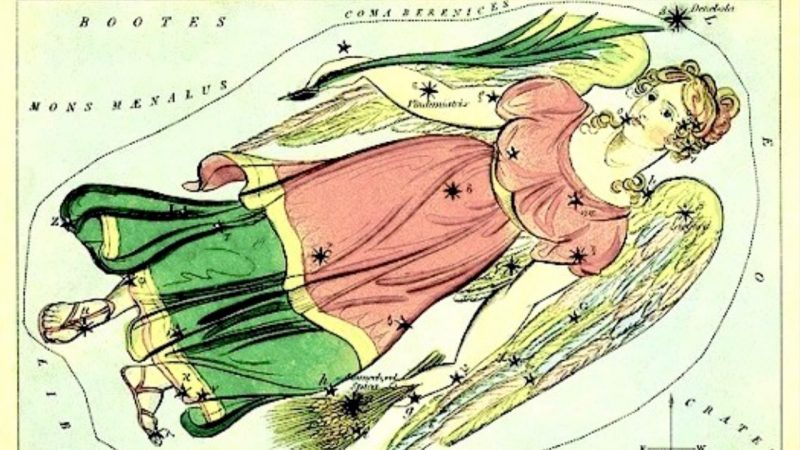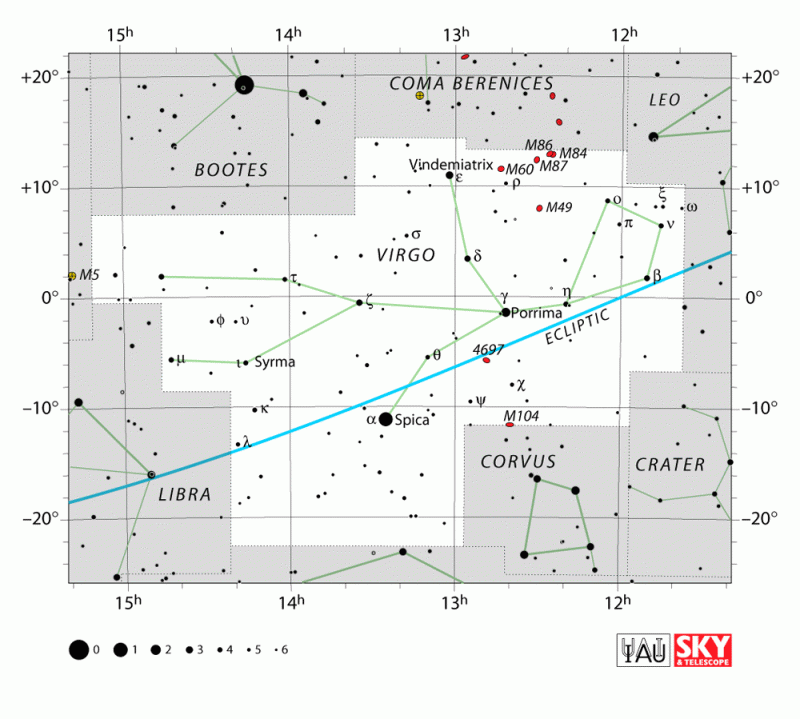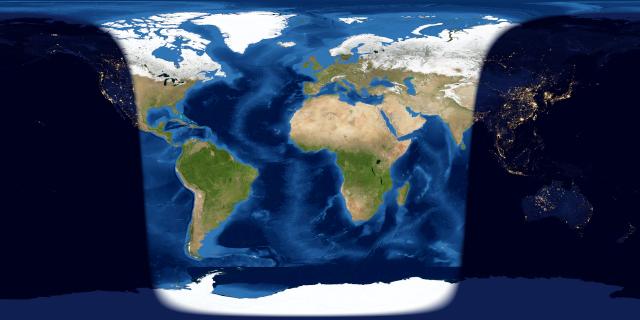On March 30 and 31, 2018, the nearly full or full moon shines in front of the constellation Virgo the Maiden. The moon will turn full in Virgo on March 31; it’ll be our second full moon of this month, and the second Blue Moon of 2018. In addition, this upcoming Blue Moon is the Northern Hemisphere’s first full moon of spring and the Southern Hemisphere’s first full moon of autumn.
From around the world on March 30 and 31, watch for the bright moon to shine in the vicinity of the star Spica from dusk until dawn. Spica is a 1st-magnitude star and the brightest star in the constellation Virgo. The moon and Spica light up the eastern sky as darkness falls, climb highest up for the night around midnight and then sit low in the west at dawn.


Want to know when the moon will turn precisely full? It depends on where you live worldwide. The moon will reach the crest of its full phase – when it’s 180 degrees opposite the sun in ecliptic or celestial longitude – on March 31, 2018, at 12:37 UTC. That’s 8:37 a.m. EDT on March 31.
In other words, from North America, the moon you’ll see before Saturday’s dawn is more full than the moon you’ll see that evening.
From the western part of North America and Hawaii, the moon will be above the horizon at the instant of full moon before daybreak March 31. The moon turns precisely full at 5:37 a.m. Pacific Daylight Saving Time, 4:37 a.m. Alaskan Daylight Saving Time and 2:37 a.m. Hawaiian Standard Time

Those living in eastern Asia, Indonesia, Australia and New Zealand will see the moon at the instant of full moon sometime after sunset March 31. Click here to find out the time of the full moon for your area, remembering to check the moon phases and moonrise and moonset boxes.
Or … just look in the sky. For all of us around the world, the moon will appear plenty full as it lights up the nighttime for the next few nights.












